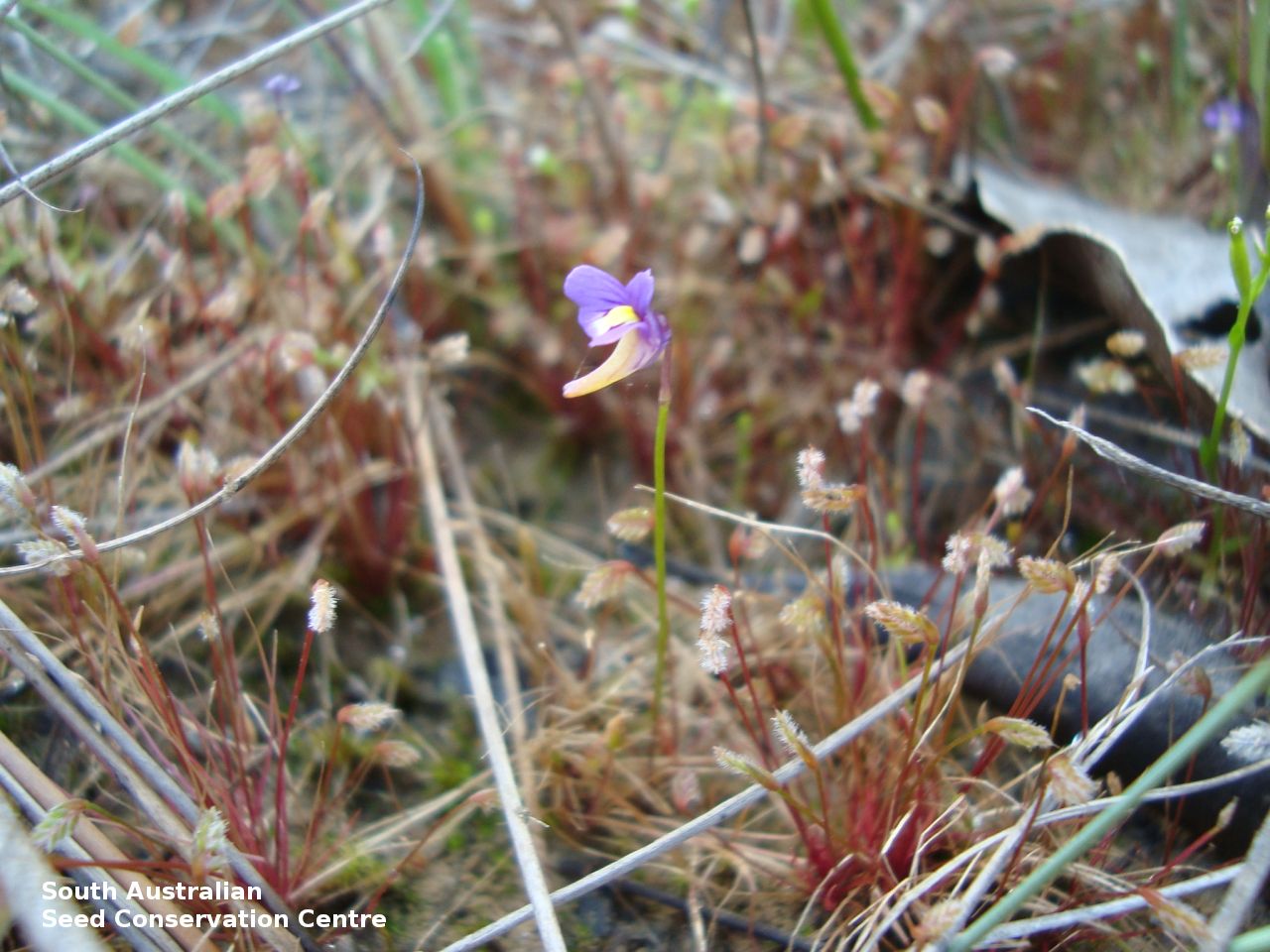
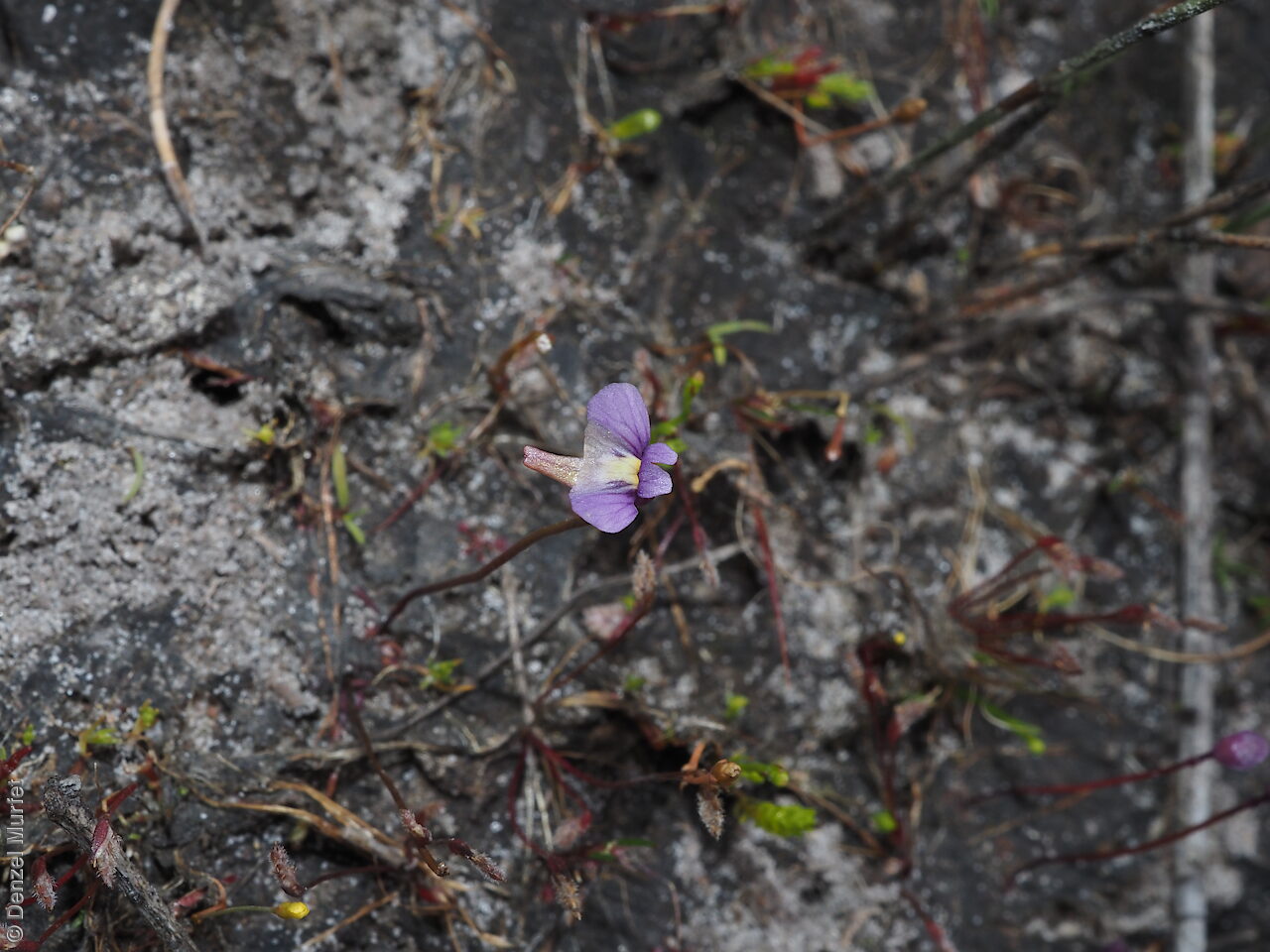
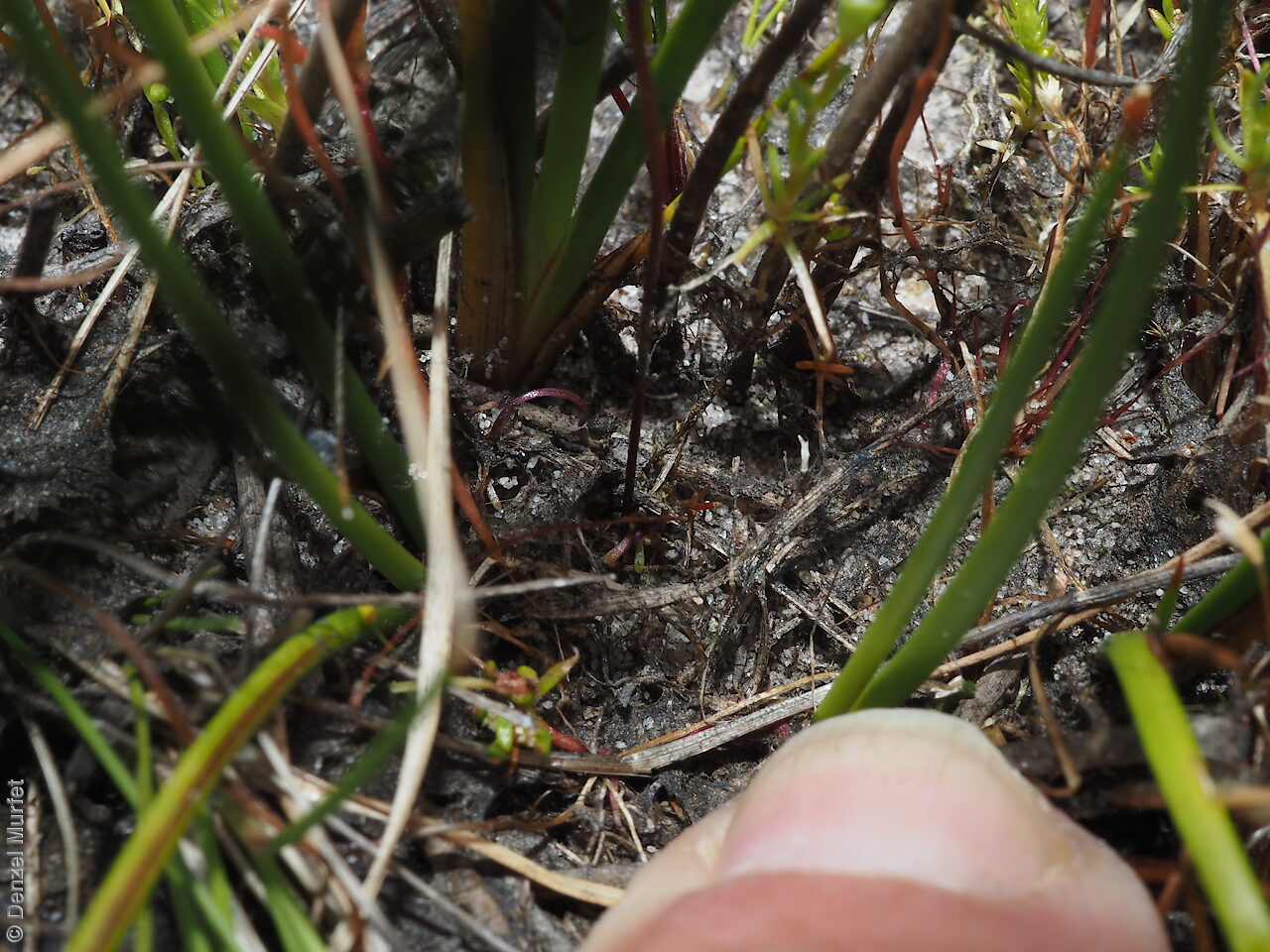
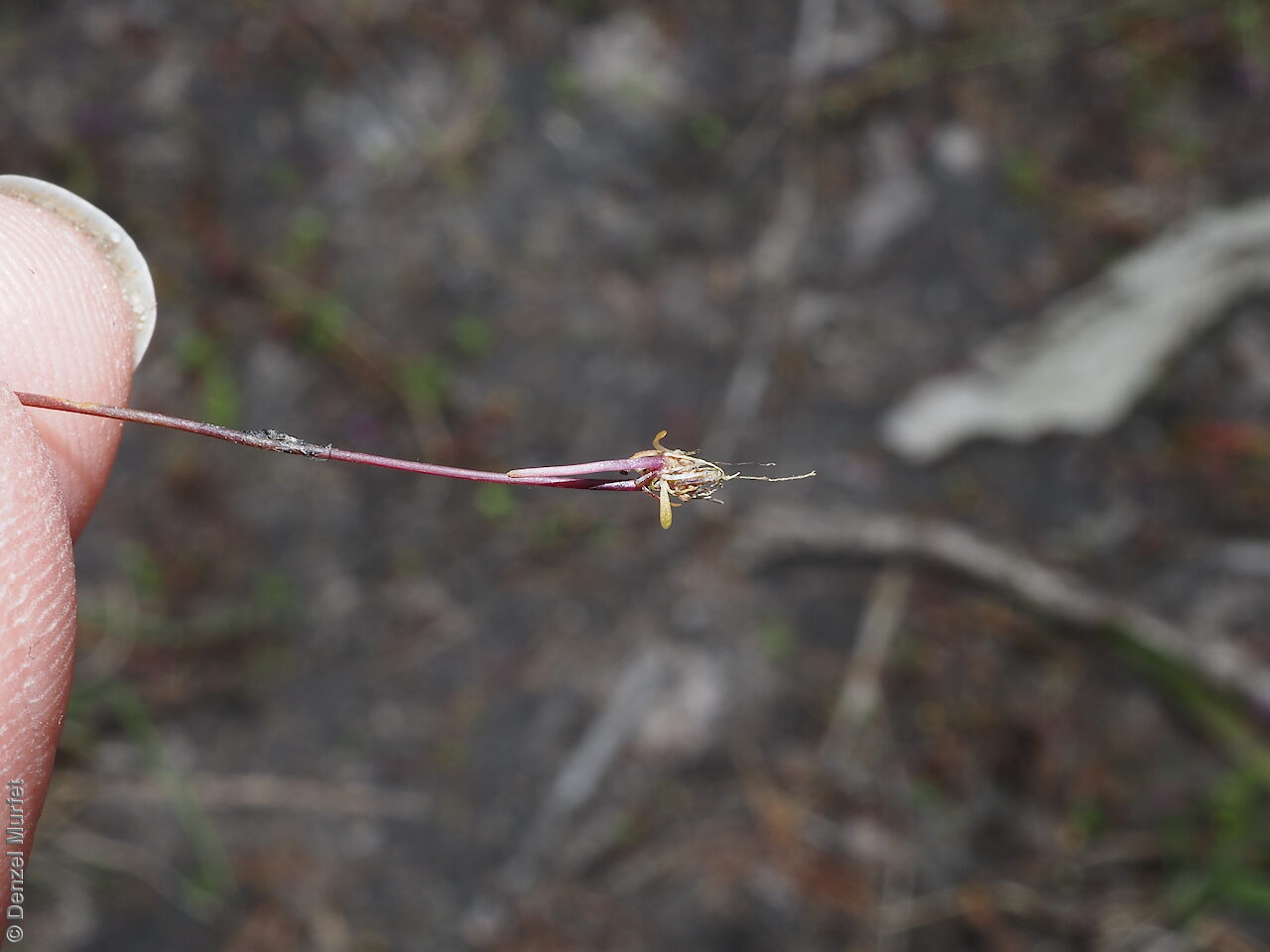
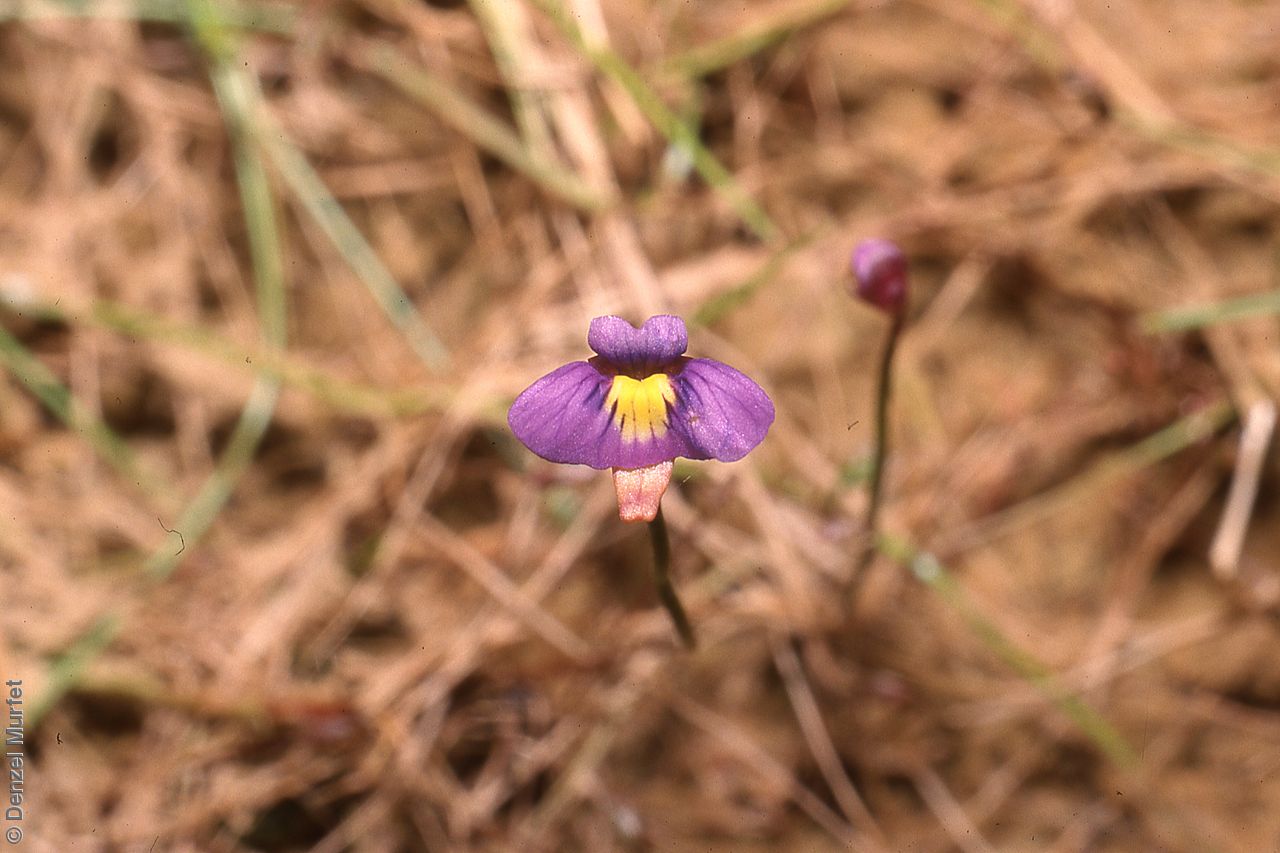
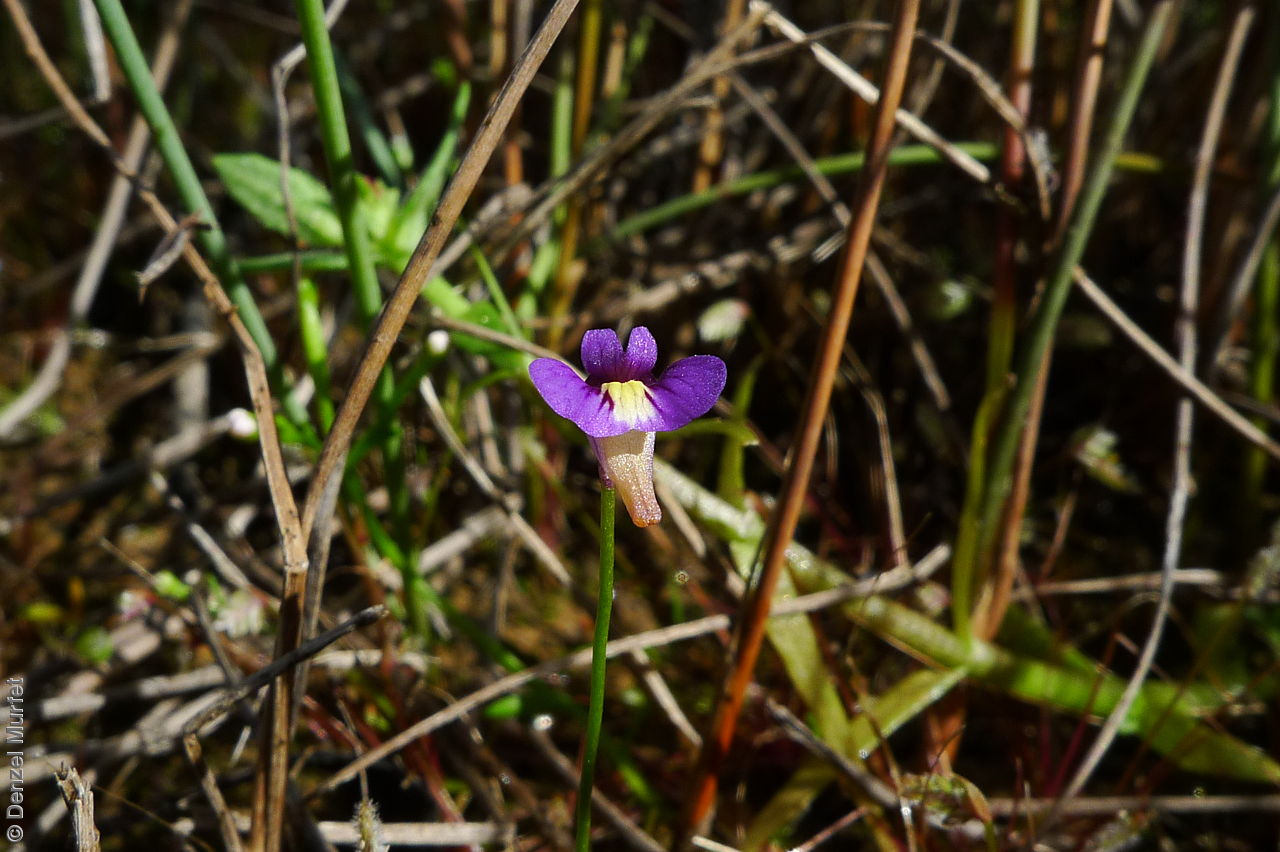
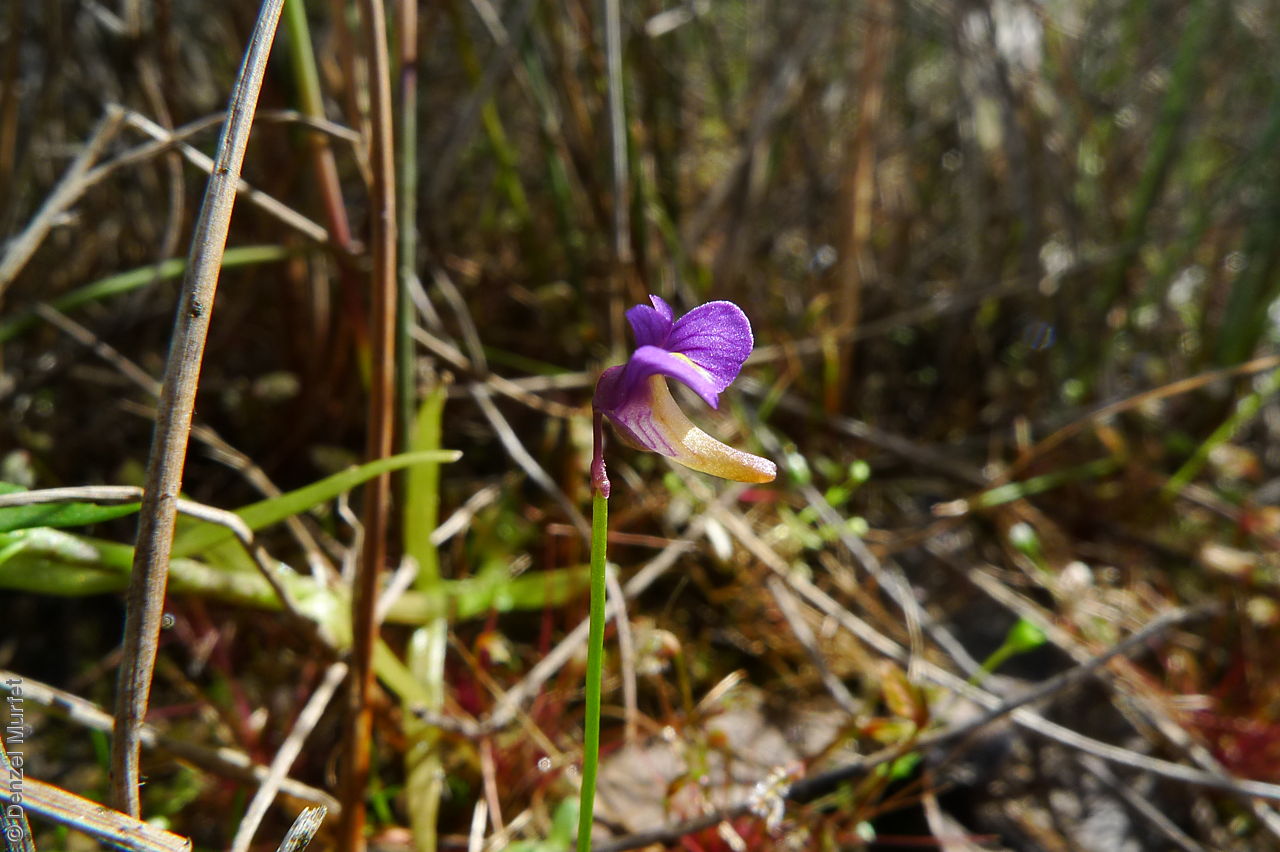
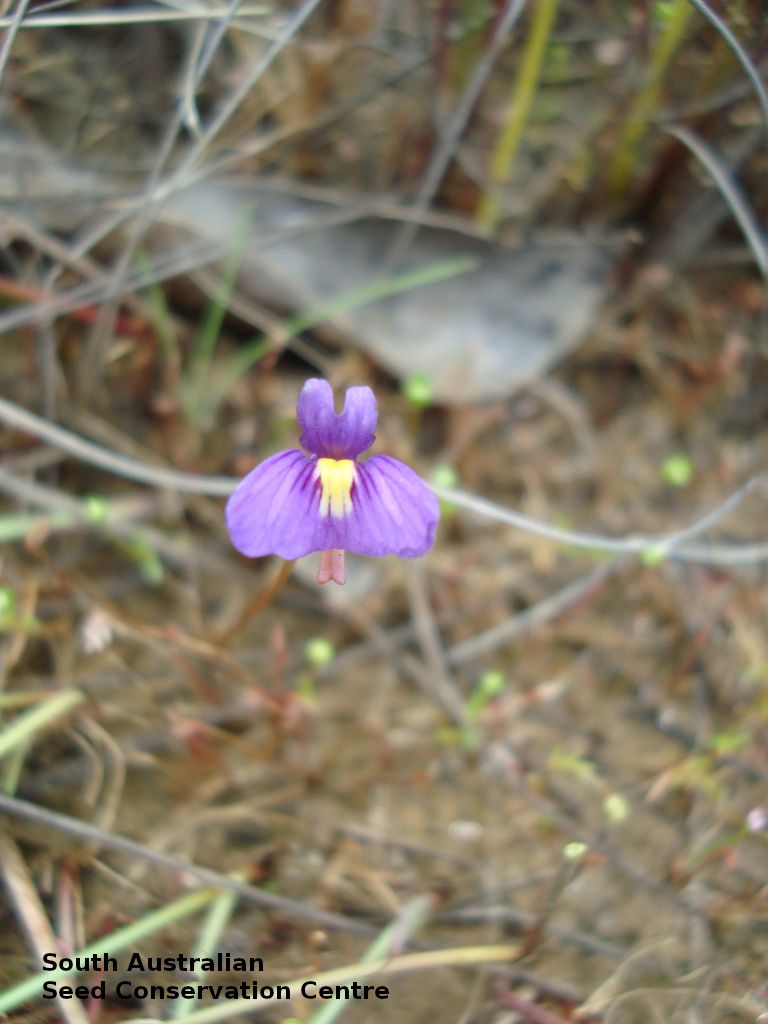
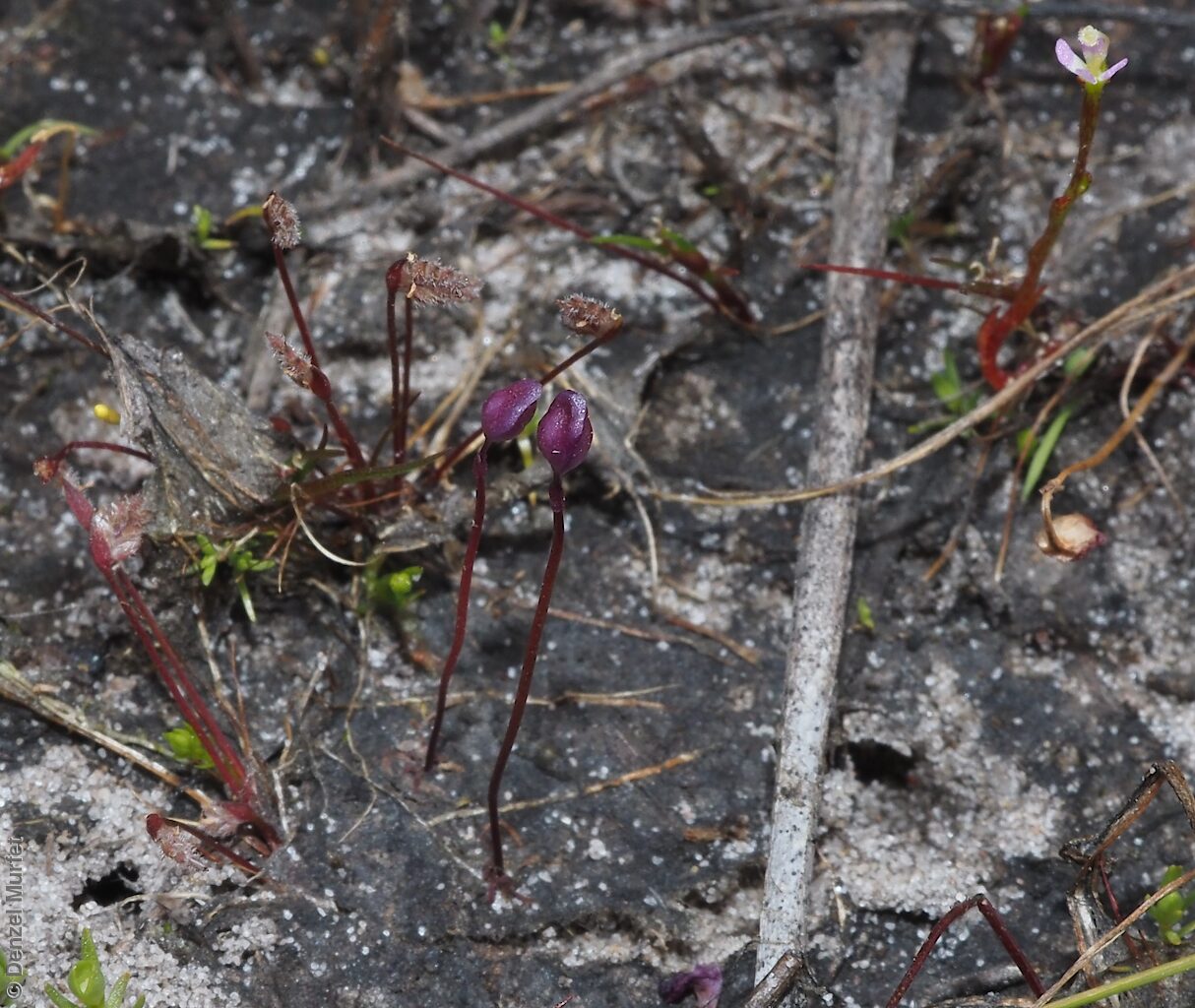
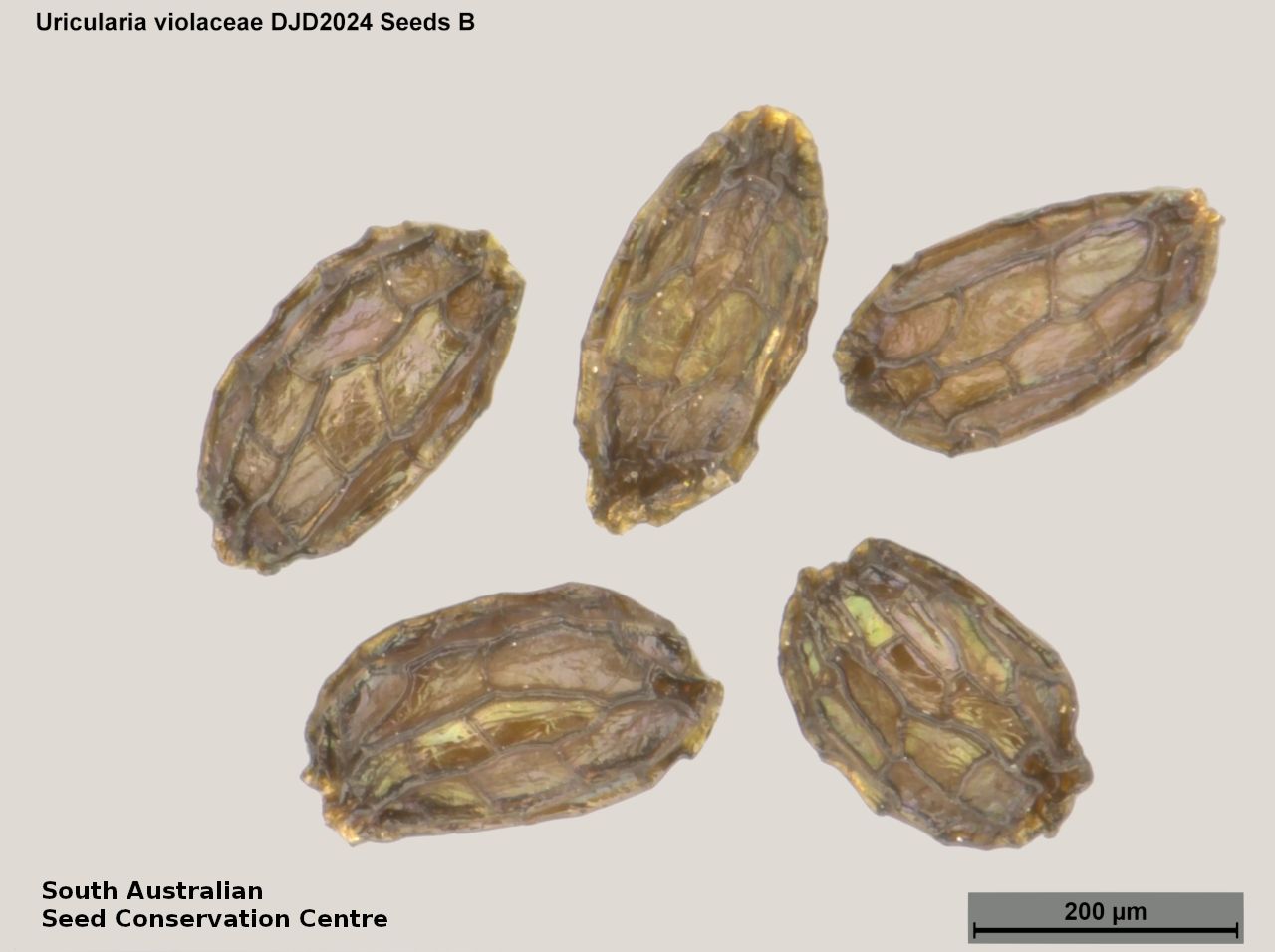


Botanical art
Etymology
Utricularia from the Latin 'utriculus' meaning a small bottle or bladder; referring to a small insect trapping sac attached to the underground leaves. Violacea from Latin meaning violet colour; referring to the colour of the flowers.
Distribution and status
Found only in the lower South-east in South Australia, growing in wet heaths and swamps. Also found in Western Australia, Victoria and Tasmania. Native. Rare in South Australia. Rare in Victoria and Tasmania. Common in Western Australia.
Herbarium region: South Eastern
NRM region: South East
AVH map: SA distribution map (external link)
Plant description
Tiny terrestrial annual herb. Leaves numerous, rosetted, narrowly linear-cuneate, to 12 mm long and 0.5 mm wide. Inflorescence 1-4 erect spike to 10 cm long with 1 violet flower each, centre of lower lip pale yellow with 3 dark violet lines, upper lip obovate, bilobed, lower lip much larger, transversely oblong or elliptic. Flowering between October and November. Fruits are purple brown globular capsule to 2 mm diameter. Seeds are tiny brown ellipsoid seed to 0.4 mm long and 0.2 mm wide, with a thin mesh-like surface.
Seed collection and propagation
Collect seeds between November and January. Collect mature capsules, those turning reddish brown colour, fat and containing brown seeds. Can collect individual capsules or break off the whole stem. Place the capsules in a tray and leave to dry for two weeks. Then rub the capsules gently by hand to dislodge the seeds. Use a sieve to separate the unwanted material. Store the seeds with a desiccant such as dried silica beads or dry rice, in an air tight container in a cool and dry place. From one collection, the seed viability was high, at 100%.
| Location | No. of seeds (weight grams) | Number of plants | Date collected | Collection number Collection location | Date stored | % Viability | Storage temperature |
|---|---|---|---|---|---|---|---|
| MSB | 13,000 (0.24 g) | 50 | 23-Nov-2007 | RJB75917 South Eastern | 100% | ||
| BGA | 15,000 (0.08 g) | 100+ | 17-Nov-2010 | DJD2024 South Eastern | 1-Jan-2012 | 100% | -18°C |
Number of plants: This is the number of plants from which the seeds were collected.
Collection location: The Herbarium of South Australia's region name.
% Viability: Percentage of filled healthy seeds determined by a cut test or x-ray.